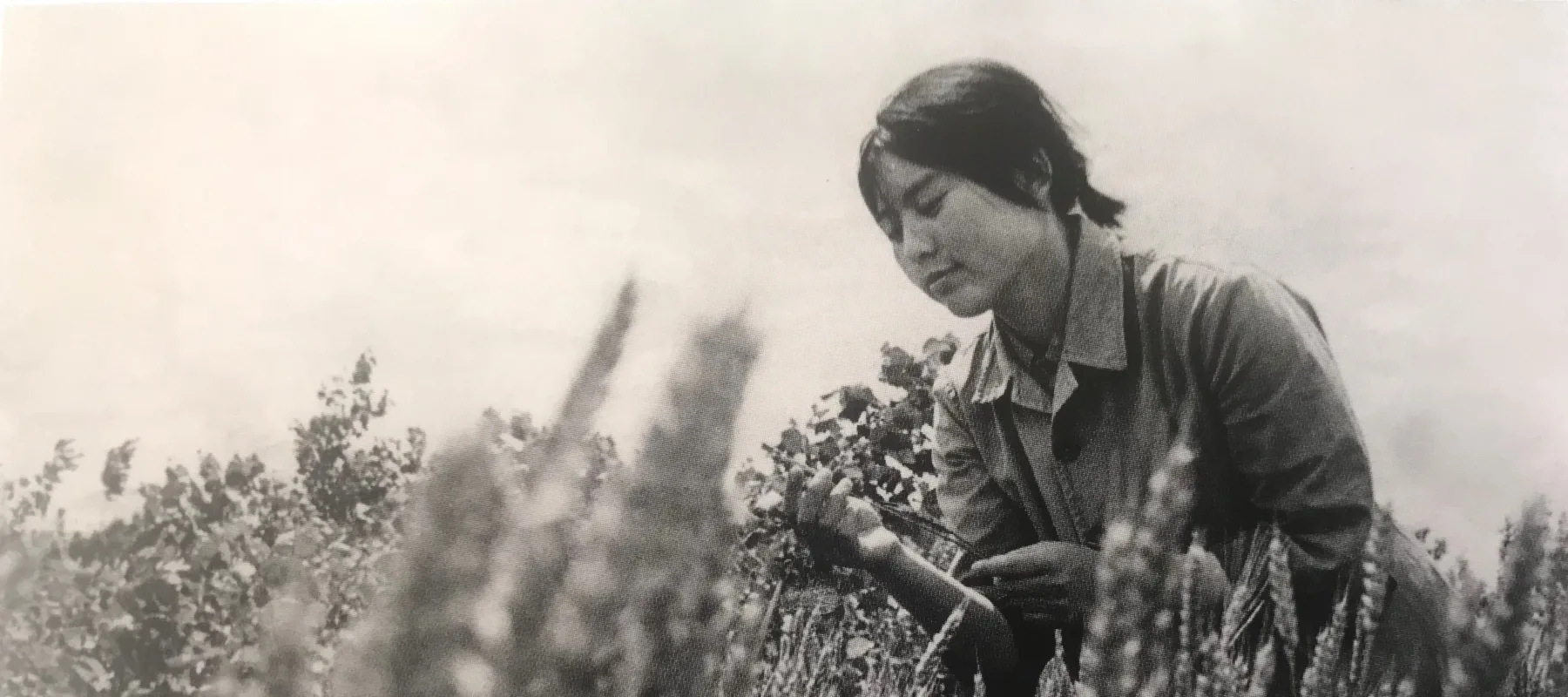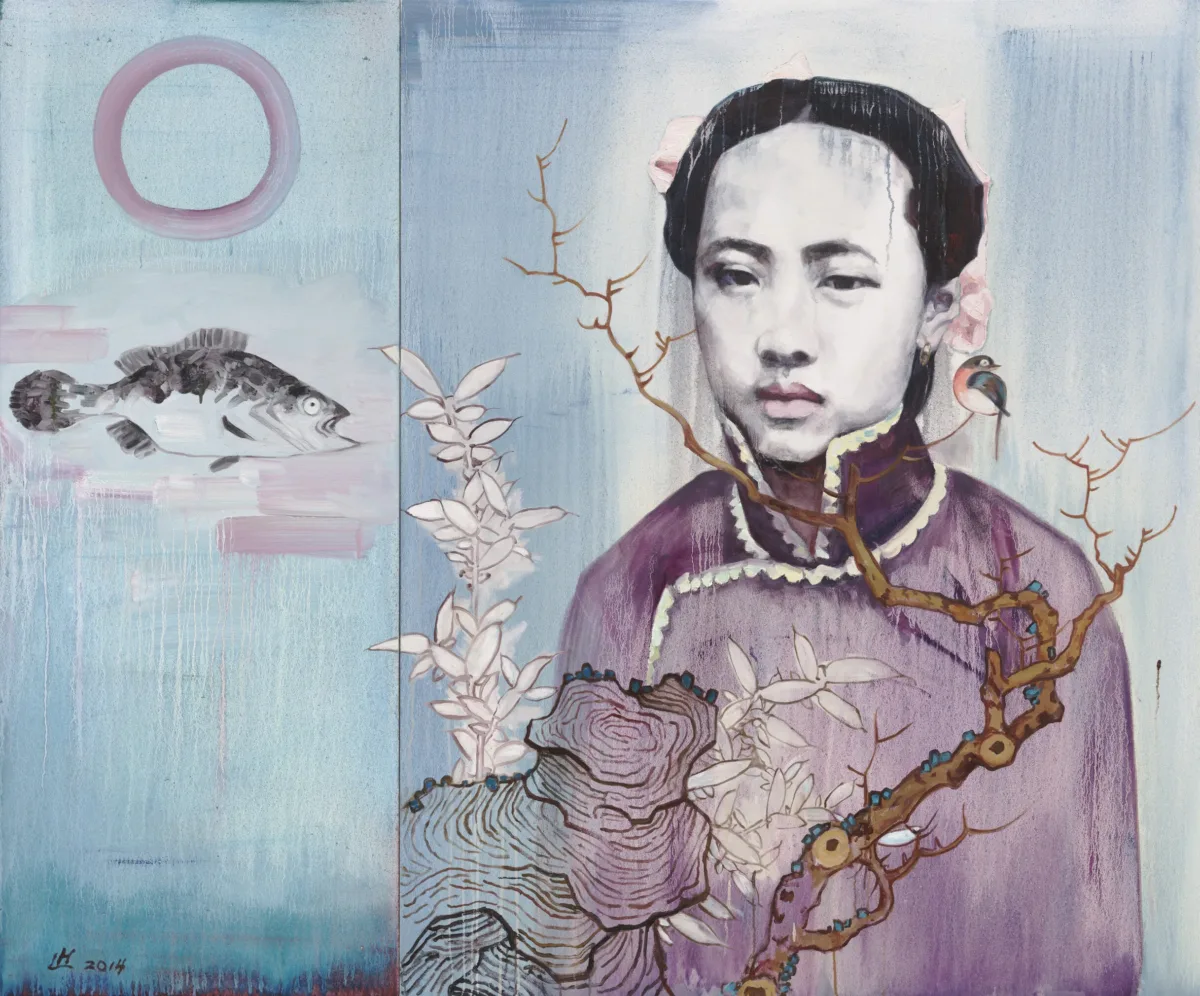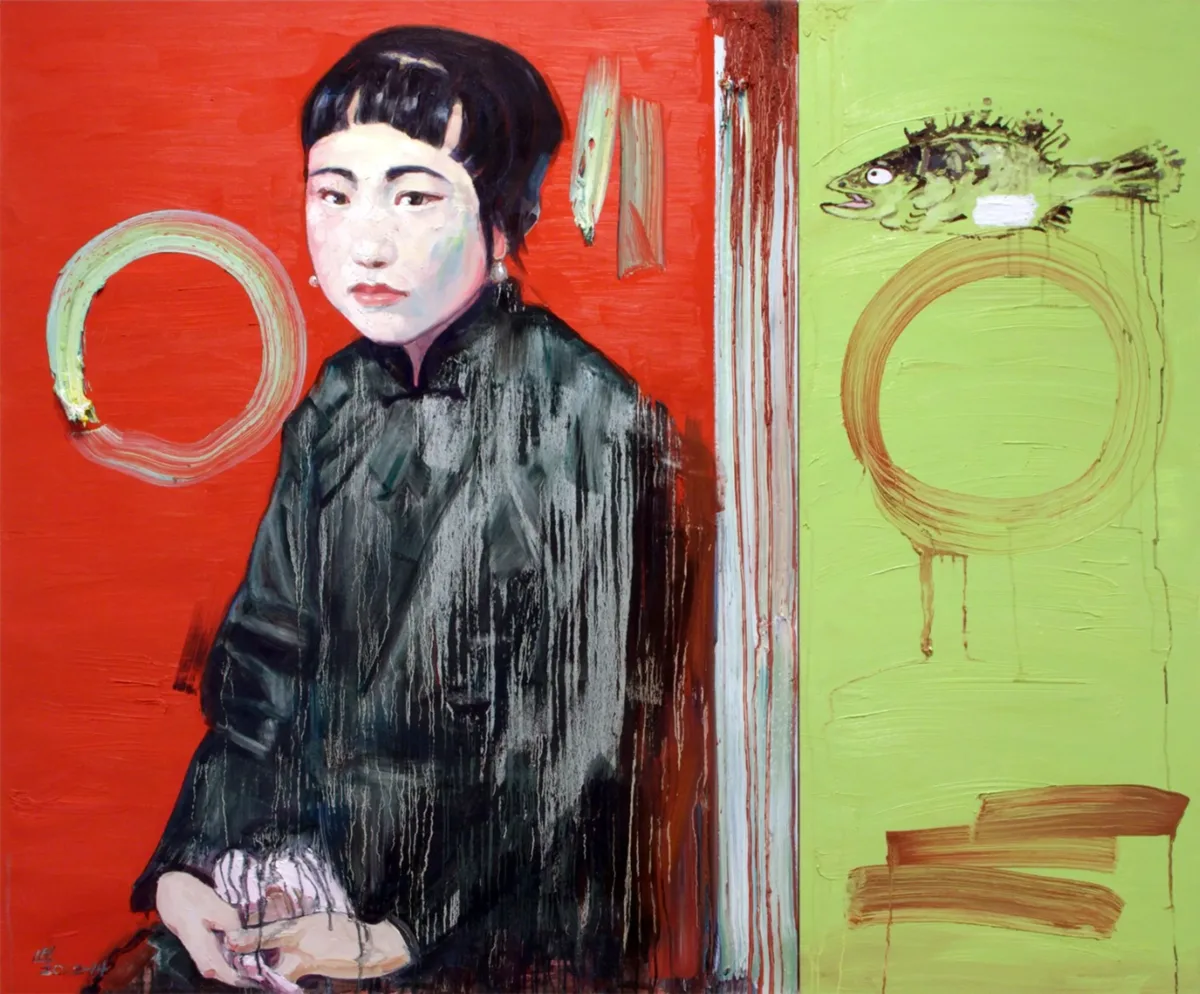Nine paintings and works on paper by Hung Liu (1942–2021) greet visitors to one of the museum’s new fourth-floor galleries. Alongside this special presentation, a digital resource delves deeper into the images and objects that served as Liu’s lifelong source material and inspiration. Orin Zahra, NMWA associate curator, reflects on positioning the artist’s profound and layered work alongside her photographic archives.
Photographs from the Archives
Preparing this exhibition with the support of the Hung Liu Estate, I studied numerous physical photographs of courtesans in Liu’s archive, which the artist discovered on a research trip to Beijing in the 1990s. It was surreal to hold the objects in my hands, realizing that Liu must have held them countless times in her studio. The framing of many images was slightly off-center: the photographs I held were snapshots that Liu took of existing historical images, objects that could not leave China. These gave me a new understanding of Hung Liu as a researcher and an inquisitive student of history.
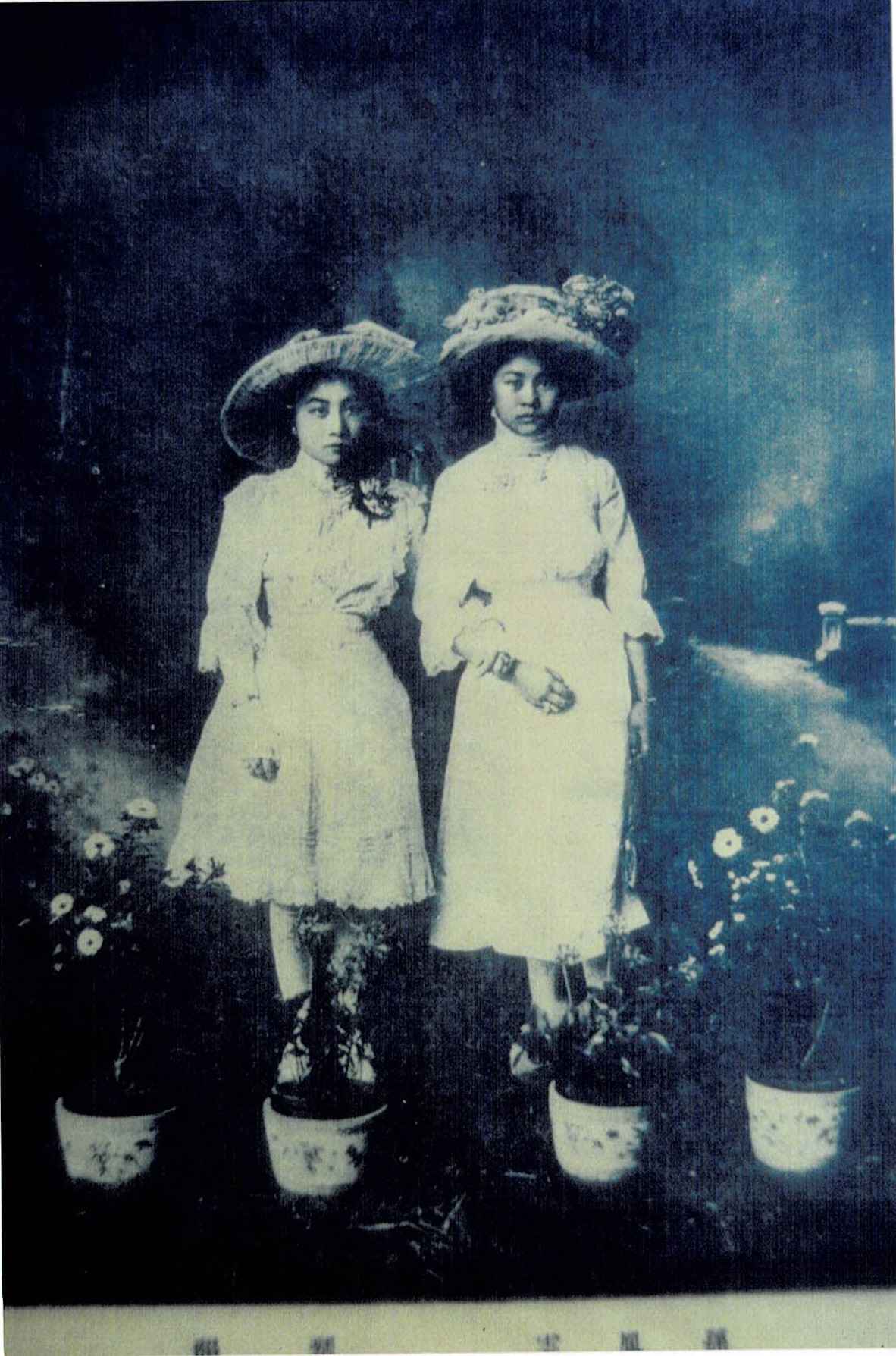
In Liu’s archive, the black-and-white images of women and young girls were haunting. It was easy to see the compassion that Liu felt for them. Questions immediately came to mind, perhaps similar to the artist’s own ruminations—Who were these women? What were their lives like? How might they have felt seeing their faces memorialized in paint?
Poetic Interpretations
Liu’s adaptations from the photographs are captivating, as are the elements that she added to make each image her own. Her works frequently include signs and symbols: Buddhist and other spiritual figures; lotus blossoms and floral motifs; and birds such as cranes, which symbolize serenity and blessings, and Song Dynasty ducks for love and devotion. Liu incorporated these symbols as a way to guide and protect the subjects of her works.
In Winter with Cynical Fish (2014), one of a series of four diptych paintings—each representing a season—Liu layered the woman’s body with painted leaves of white bamboo, a plant noted for its hardiness. The fish imagery references the paintings of the eminent Chinese artist Bada Shanren (born Zhu Da, ca. 1625–1705). After the museum acquired Winter with Cynical Fish and Summer with Cynical Fish (2014) in 2019, Liu told me that she wanted the fish to accompany the women throughout the seasons. It was the artist’s poetic effort to honor these figures, who perhaps went unvalued in their own lifetimes, and further elevate their status through images that were esteemed in Chinese cultural history.
Liu was also inspired by Dorothea Lange’s photographs of migrants in the American Dust Bowl. In Corn Carrier (1999), a promised gift to the museum, she explored the effects of displacement and economic depression on Chinese migrant workers. Here, she depicts a young woman who wears a loose shirt, khaki pants, and sneakers. On her back, a large cluster of thick brushstrokes resembles corn stalks. As this woman is burdened under the weight of crops on her back, her face shows anguish and fatigue. Liu’s signature drip marks, which she called “weeping realism,” heighten the emotion of the scene.
Legacy
Dorothy Moss, director of the Hung Liu Estate, describes Liu’s conceptual approach to revisiting the past: “She often said that ‘history is a verb,’ and her use of archives to reinsert buried histories into museum spaces was radical when she first began doing this work in the early 1990s.” The estate plans to expand the use of the artist’s archives for public audiences. Describing Liu’s expansive records, Moss says, “I have been amazed at how careful she was about saving everything, going back to her middle school sketches from China. Her papers also include journals, letters, and sketches she made while she was in her 20s during the Cultural Revolution. Once digitized and accessible, this incredibly rich material will undoubtedly change the course of American art history.”
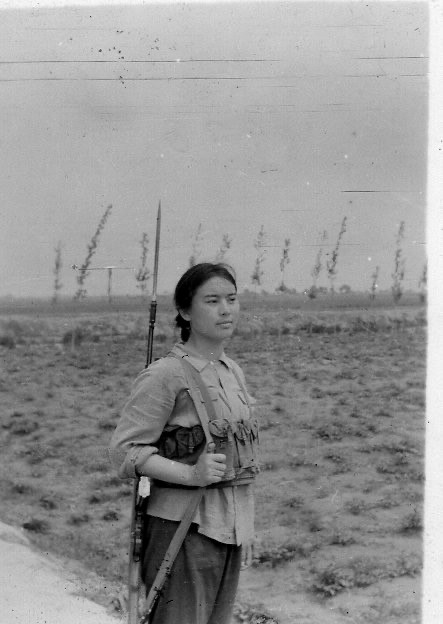
The artist’s death in 2021 is felt sorely by those of us who knew her and are moved by her art. Liu was a tireless advocate for women in history. Looking through just a portion of her archives and thinking about her legacy, I am exhilarated to discover just how much more there is to learn—and share— from the keenly intelligent, sensitive, and intrepid Hung Liu.
